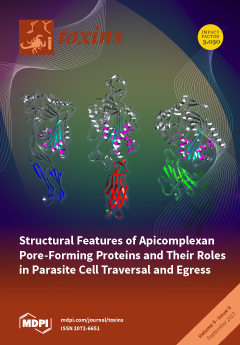Staphylococcus aureus is a major cause of infections. Toxic shock syndrome toxin (TSST-1) and Panton–Valentine leukocidin (PVL) are associated with severe clinical syndromes.
S. aureus colonizing isolates recovered from healthcare workers and patients in the intensive care unit (ICU) of a university hospital
[...] Read more.
Staphylococcus aureus is a major cause of infections. Toxic shock syndrome toxin (TSST-1) and Panton–Valentine leukocidin (PVL) are associated with severe clinical syndromes.
S. aureus colonizing isolates recovered from healthcare workers and patients in the intensive care unit (ICU) of a university hospital comprising Group A were compared with those from adult non-ICU carriers (Group B).
mecA,
lukS/lukF-PV (Panton–Valentine leukocidin, PVL), and
tst (toxic shock syndrome toxin) gene carriage was detected by PCR. Clones were identified in all methicillin-resistant
S. aureus (MRSA) and toxin-positive methicillin-susceptible strains (MSSA) by pulsed-field gel electrophoresis (PFGE),
agr groups, and multi locus sequencing typing (MLST). Group A included 90
S. aureus isolates, whereas Group B 53. PVL was more frequently found among MRSA vs. MSSA (
p < 0.001) and in strains of Group B as compared to Group A (
p < 0.001), consistent with the spread of ST80-IV. Higher incidence of
tst gene carriage was identified among MSSA vs. MRSA (
P 0.005) belonging mainly to ST30, and Group A vs. Group B (
P 0.002). The wide dissemination of ST80-IV mainly in the community is responsible for a high percentage of PVL-positive MRSA, while silent spread of
tst-positive
S. aureus clones among ICU patients and personnel poses a threat of hospital transmission and possible severe infections.
Full article






